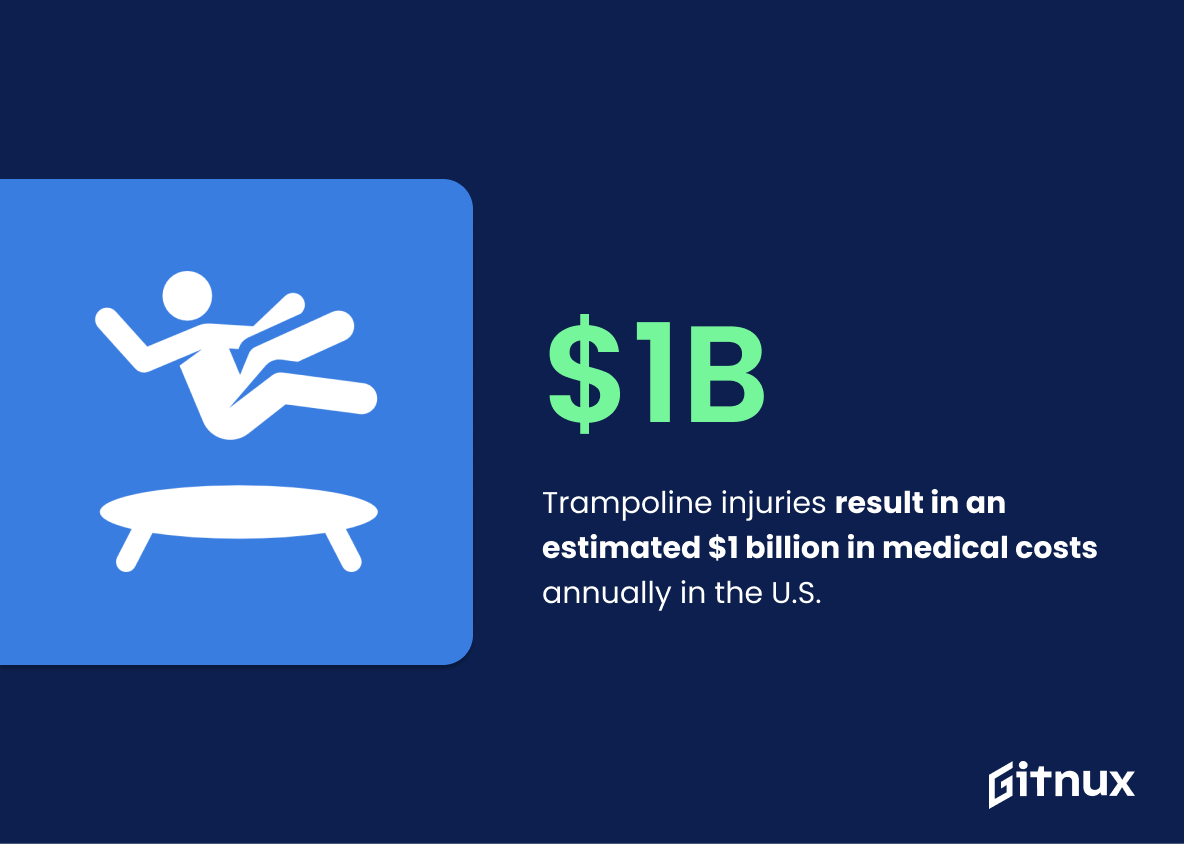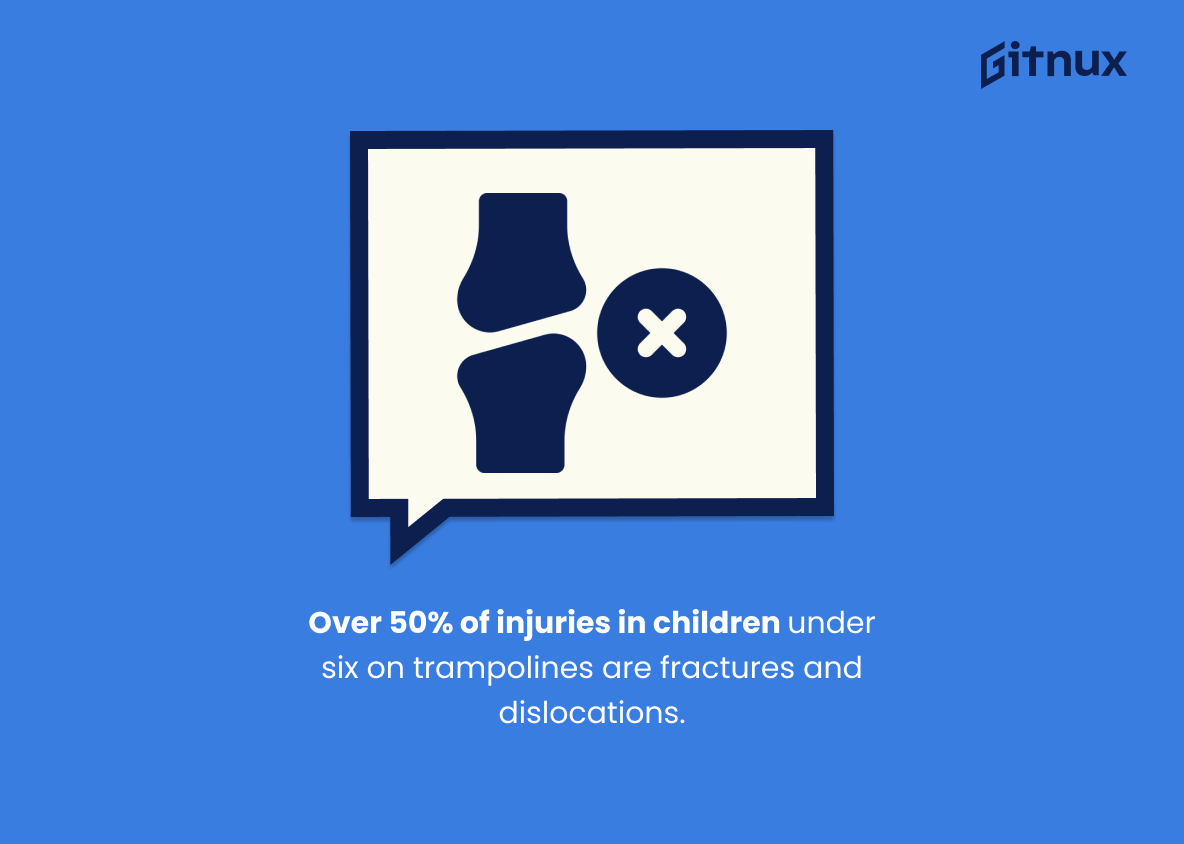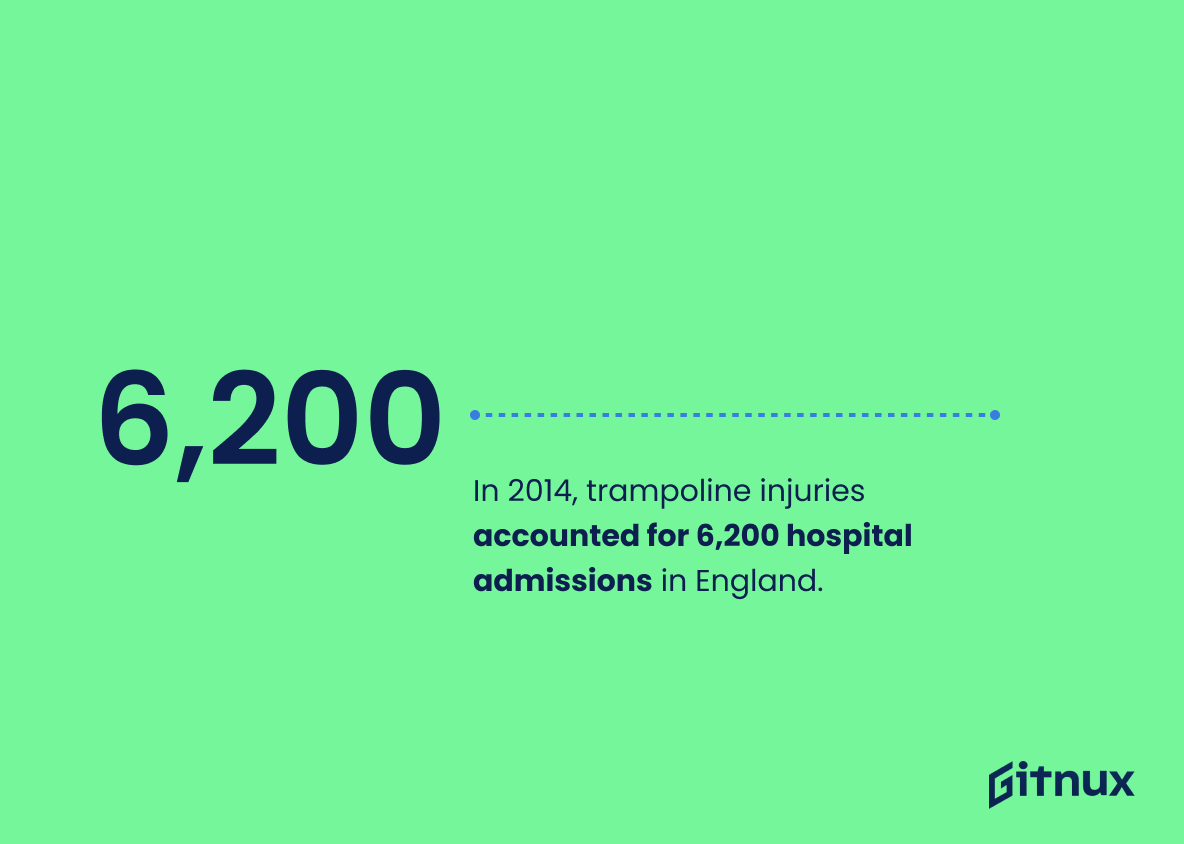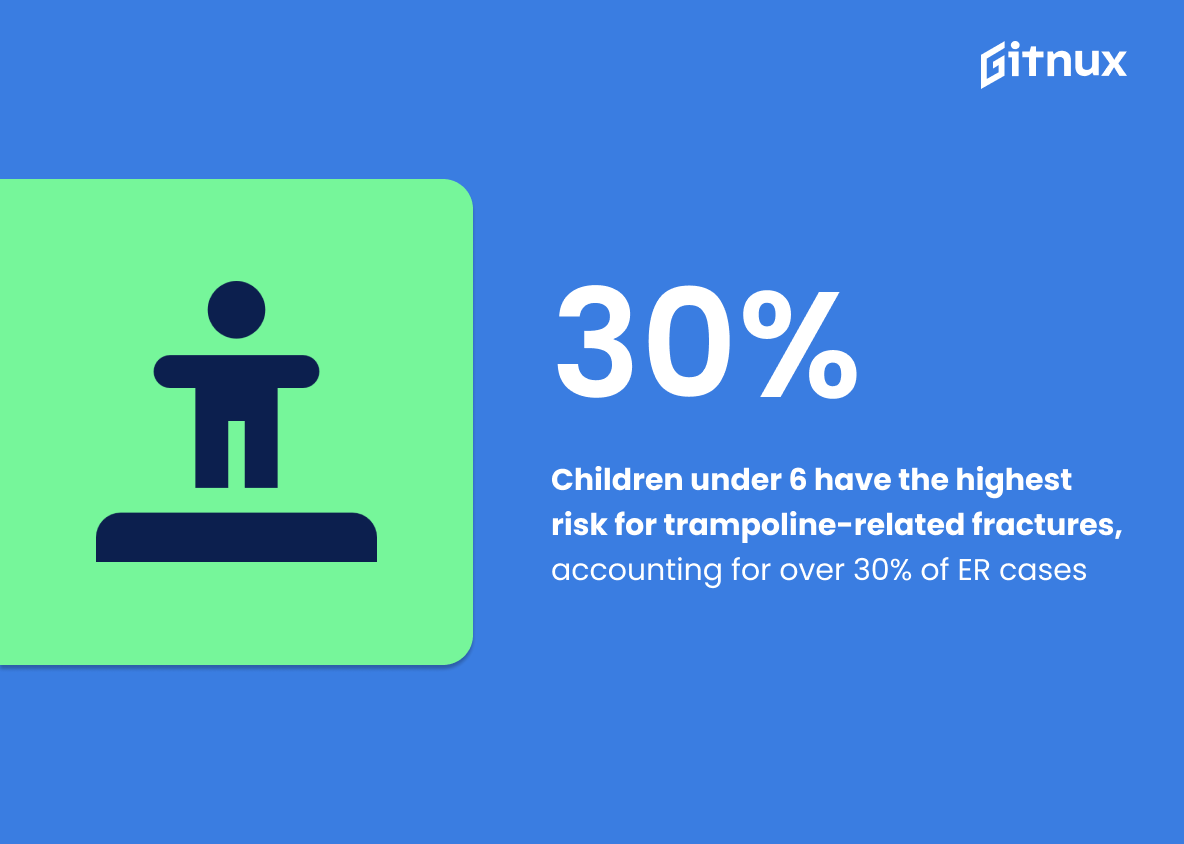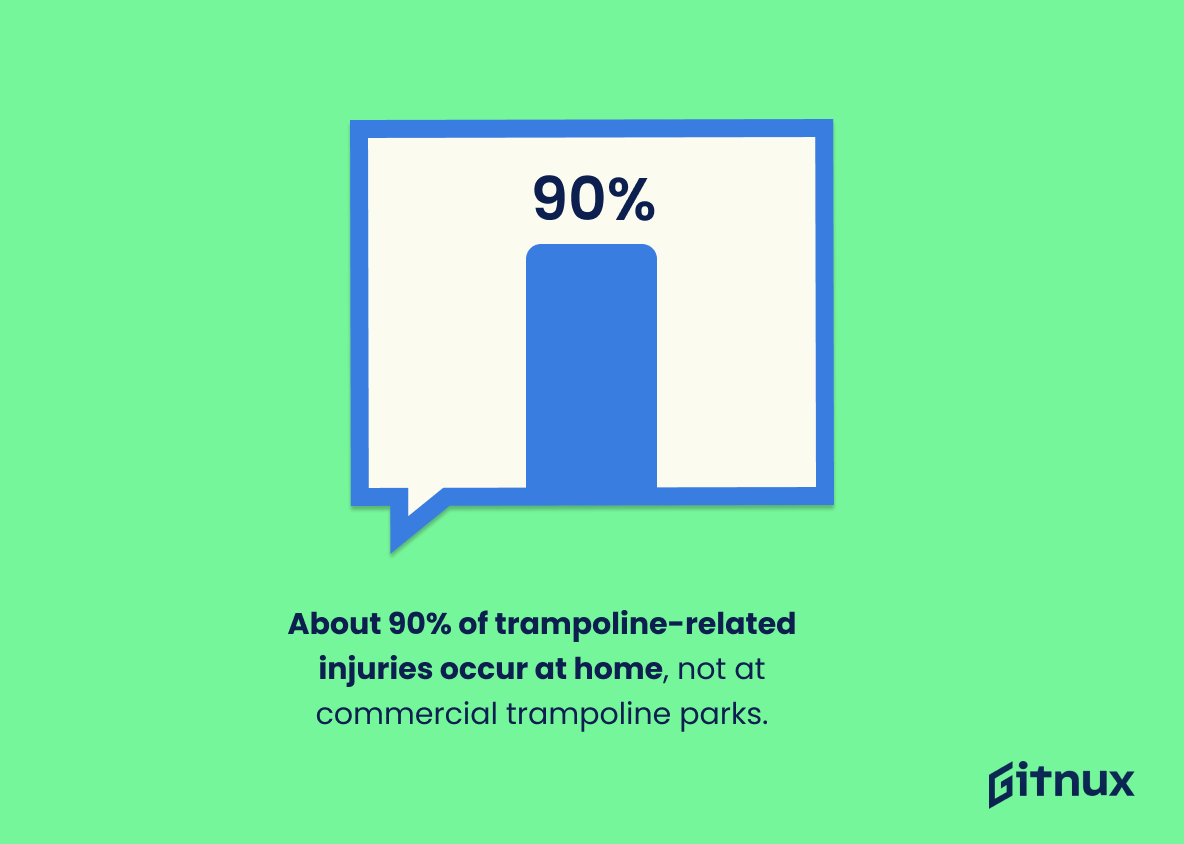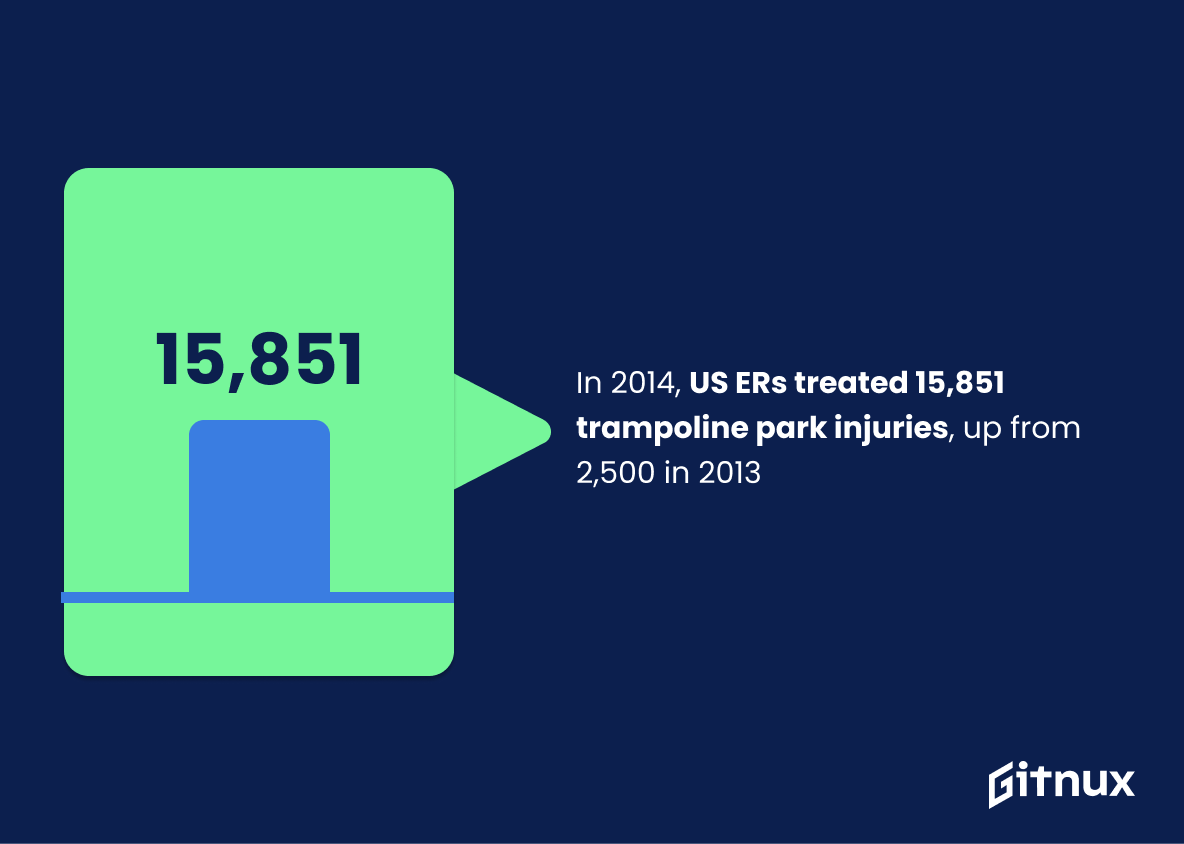Trampoline accidents present a significant issue with long-term implications. The US Consumer Product Safety Commission reports over 100,000 trampoline-related injuries annually. Notably, 1 in 200 of these injuries results in permanent neurological damage, primarily when multiple individuals jump simultaneously. From 2002-2011, trampoline accidents accounted for a staggering one million emergency room visits and approximately $1 billion in medical costs per year.
Fractures make up 92% of all injuries to upper extremities, with dislocations and fractures constituting half of all injuries in children under five. This category also represents 40% of injuries across all ages. In 2014, failed landings after flips or somersaults resulted in 6200 hospital admissions in England, demonstrating the risk of complex maneuvers.
Between 2008-2017, trampoline injuries in children under six rose by 55%, with over 20,100 park-related incidents reported in 2017 in the US. In Australia, there were 3,800 hospitalizations from 2007-2011 and a near doubling of emergency room visits from 2013 to 2015.
The statistics underline the critical need for safety in using recreational equipment like trampoline parks. Let’s delve deeper into the most crucial statistics surrounding trampoline injuries.
Trampoline Accidents Statistics Overview
Trampoline injuries result in an estimated $1 billion in medical costs annually in the United States.
This statistic serves as a stark reminder of the financial burden that trampoline injuries can have on individuals and families. It highlights the importance of taking safety precautions when using trampolines, as the costs associated with these injuries can be significant. Furthermore, it emphasizes the need for proper supervision and maintenance of trampolines to ensure that they are safe for use.
More than 50% of injuries in children younger than six years old on trampolines involve fractures and dislocations.
This statistic is a stark reminder of the potential danger that trampolines can pose to young children. It highlights the need for parents to be extra vigilant when their children are using trampolines, as the risk of fractures and dislocations is significantly higher than for older children.
In 2014, trampoline injuries accounted for 6,200 hospital admissions in England.
This statistic is a stark reminder of the potential danger of trampoline use. It highlights the fact that, despite the fun and joy that trampolines can bring, they can also be a source of serious injury. The 6,200 hospital admissions in England in 2014 demonstrate the need for caution when using trampolines, and the importance of following safety guidelines.
Approximately 75% of trampoline injuries occur due to failed landings after flipping or doing a somersault.
This statistic is a crucial reminder of the importance of proper safety measures when using a trampoline. It highlights the fact that the majority of trampoline injuries are caused by improper landings, emphasizing the need for users to take extra caution when attempting flips or somersaults. Knowing this information can help people make informed decisions about how to use a trampoline safely and reduce the risk of injury.
Trampoline-related injuries among children aged 5 and younger have increased by over 55% from 2008 to 2017.
This statistic is a stark reminder of the dangers of trampoline use among young children. It highlights the need for parents to be aware of the risks associated with trampoline use and to take the necessary precautions to ensure their children’s safety. The 55% increase in trampoline-related injuries among children aged 5 and younger is a clear indication that more needs to be done to protect our youngest and most vulnerable.
Children under the age of 6 are at the highest risk for trampoline-related fractures, accounting for over 30% of fractures seen in emergency departments.
This statistic is a stark reminder of the potential danger trampolines pose to young children. With over 30% of fractures seen in emergency departments being attributed to trampoline-related accidents, it is clear that parents should take extra precautions when allowing their children to use trampolines.
An estimated 9 out of 10 trampoline-related injuries happen at home rather than at commercial trampoline parks.
This statistic is a stark reminder of the importance of taking safety precautions when using trampolines at home. It highlights the fact that the majority of trampoline-related injuries occur in a domestic setting, rather than in a commercial trampoline park, where safety measures are more likely to be in place. This serves as a warning to those who use trampolines at home to be extra vigilant and take all necessary precautions to ensure the safety of themselves and those around them.
In England, over 75% of trampoline injuries from 2014-2016 were in children under the age of 15.
This statistic is a stark reminder of the dangers of trampolines, particularly for young children. It highlights the need for parents to be extra vigilant when it comes to their children’s safety when using trampolines, and to ensure that they are properly supervised and that the trampoline is in good condition. It also serves as a warning to parents to be aware of the risks associated with trampolines and to take the necessary precautions to prevent accidents.
Emergency departments in the US treated 15,851 trampoline park-related injuries in 2014, an increase from 2,500 in 2013.
This statistic is a stark reminder of the dangers of trampoline parks. It shows that in just one year, the number of trampoline park-related injuries treated in emergency departments in the US skyrocketed from 2,500 to 15,851. This is a clear indication that trampoline parks are becoming increasingly hazardous and that more needs to be done to ensure the safety of those who use them.
Conclusion
Trampoline accidents are a serious issue that can lead to permanent neurological damage and costly medical bills. Every year, more than 100,000 people in the US alone are treated for trampoline-related injuries, with an estimated $1 billion spent on medical costs annually. The majority of these injuries occur when multiple people jump simultaneously or due to failed landings after flipping or doing somersaults.
Children under the age of 6 have been found to be at highest risk for fractures and dislocations while those aged 5-14 account for 40% of all trampoline injuries. Netting and padding may reduce injury risks by 22%, but it is still important to take safety precautions when using a trampoline as well as supervise children closely during use.
References
0. – https://www.www.marketwatch.com
1. – https://www.orthoinfo.aaos.org
2. – https://www.www.ncbi.nlm.nih.gov
3. – https://www.www.bbc.com
4. – https://www.www.theguardian.com
5. – https://www.www.cbsnews.com
6. – https://www.www.hopkinschildrens.org
